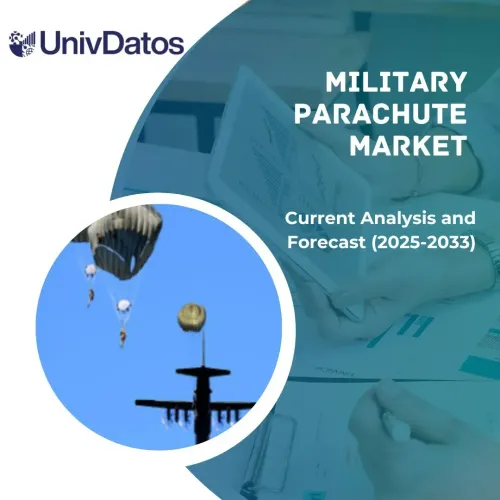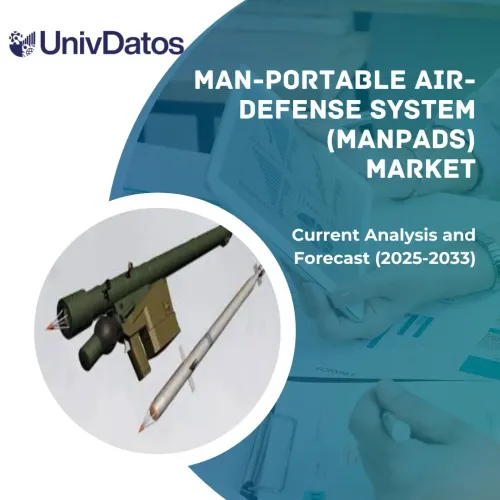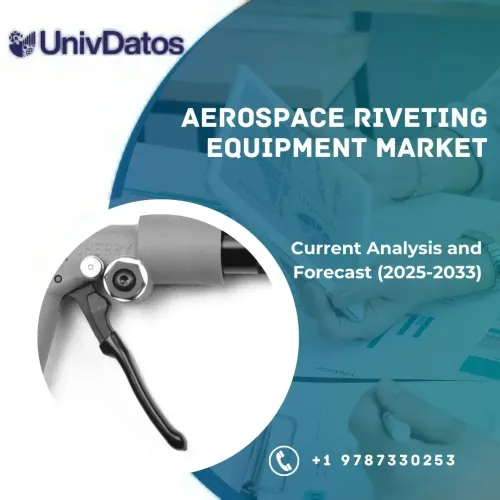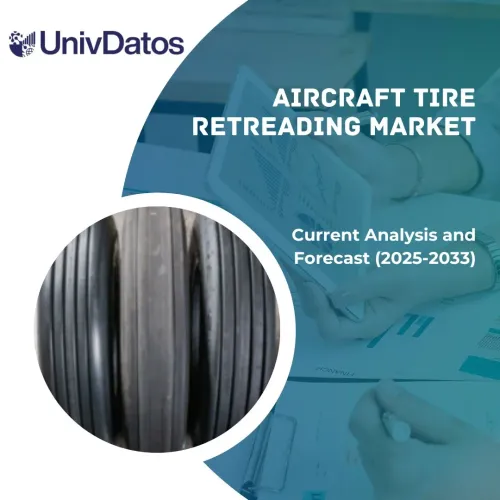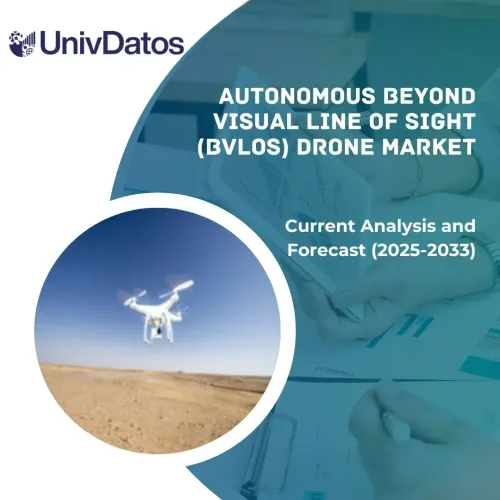航空领域增强现实和虚拟现实市场:当前分析与预测 (2024-2032)
侧重于按技术(增强现实(基于标记(低内存和容量要求,被动市场,主动标记),非基于标记),虚拟现实(沉浸式(增强用户体验,半沉浸式,完全沉浸式),非沉浸式));按功能(培训(飞行员,机组人员和地勤人员,工程师),运营(航空公司,MRO,机场,其他)),按产品(头戴式显示器,抬头显示器,手持设备,手势跟踪设备);按组件(传感器,处理器和控制器,显示器,摄像头,其他)和地区(北美(美国,加拿大,北美其他地区),欧洲(德国,英国,法国,意大利,西班牙,欧洲其他地区),亚太地区(中国,日本,印度,亚太地区其他地区),世界其他地区)
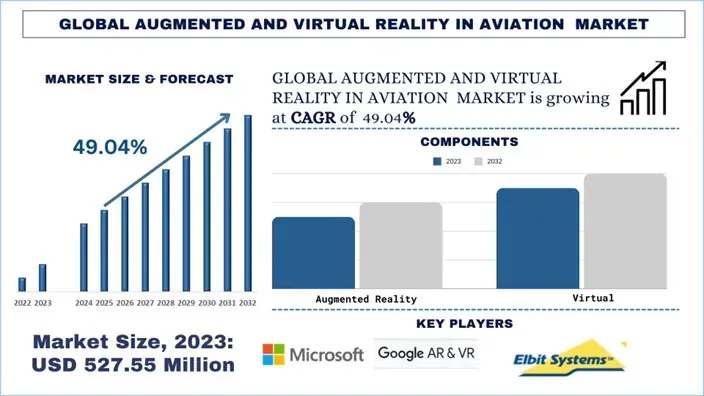
全球航空领域增强现实和虚拟现实市场规模与预测
2023年全球航空领域增强现实和虚拟现实市场价值为5.2755亿美元,预计在预测期内(2024-2032年)将以约49.04%的强劲复合年增长率增长,这归功于全球航天器行业对航空领域增强现实和虚拟现实的需求不断增长。
全球航空领域增强现实和虚拟现实市场分析
航空领域的增强现实和虚拟现实被用于预测性维护、远程协助、维护问题可视化、培训目的以及模拟真实场景的飞行。这些技术为工程师和技术人员提供了沉浸式培训场景的交互式模块。此外,借助AI和VR技术,还可以为机组人员和地面人员提供各种安全程序和实时指导,这使得近年来市场规模大幅增长。
2023年全球航空领域增强现实和虚拟现实市场价值为5.2755亿美元,预计在预测期内(2024-2032年)将以约49.04%的强劲复合年增长率增长。推动AR和VR解决方案市场在航空领域实现整合的关键因素之一是数字驾驶舱和平视显示器的集成。这些显示器与新一代飞机集成,以将关键飞行信息(如导航数据、空速、发动机温度、燃油和高度)直接叠加在飞行员的视野中。许多航空公司已开始集成平视显示器,以提供此类功能,从而为飞行员提供全面的视野并提高态势感知能力。例如,2024年,新加坡政府宣布计划购买8架新的F-35飞机。此次购买是在新加坡政府早前签署的购买12架F-35A飞机的基础上进行的。
在另一个例子中,2024年,德国政府宣布计划在2025年底前额外购买20架欧洲战斗机“台风”飞机(4.5代)。
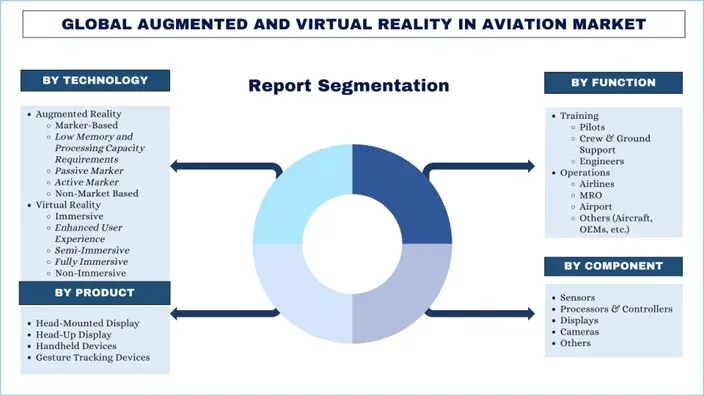
全球航空领域增强现实和虚拟现实市场趋势
本节讨论了影响全球航空领域增强现实和虚拟现实市场各个细分市场的关键市场趋势,这些趋势由我们的研究专家团队确定。
人工智能和机器学习促进预测性维护
全球航空业的主要关注点之一是及时维护并更大程度地降低风险。随着飞行安全分析的出现以及人工智能和机器学习技术的集成,预测和降低可能风险的能力已大大提高。借助实时数据分析,AI和机器学习可以通过提供预测性见解来降低风险,这已通过其在主要飞机制造商中的采用而标志着它的存在。空客是采用类似技术的领先公司之一,它使用Skywise,这是一个开放的数据平台,可从空客的所有飞机上收集大量数据,从而通过更高的机队运营性能和可靠性来提高卓越的运营水平。
随着航空业对预测系统、AI诊断和维护的需求不断增长,预计该类别中对航空领域增强现实和虚拟现实的需求将迅速增长,从而在未来几年改善其市场。
航空领域增强现实和虚拟现实行业细分
本节提供了全球航空领域增强现实和虚拟现实市场报告中每个细分市场关键趋势的分析,以及2025-2033年全球、区域和国家/地区的预测。
增强现实市场在航空领域增强现实和虚拟现实市场中占据最大的份额。
根据技术,航空领域增强现实和虚拟现实市场分为增强现实和虚拟现实。其中,增强现实占据了主要的市场份额,因为它越来越多地用于飞行员、机组人员和地面人员的培训目的。此外,增强现实还在飞行员的现有视野上添加了额外的视觉叠加层,从而提供了不同环境中训练的真实场景。增强现实具有多种优势,例如与现有系统集成、免提操作、实时信息叠加、提高维护效率、在维修任务中提高安全性、准确性、在培训场景中得到广泛使用,以及通过提供记录的程序、清单和维护活动的审计跟踪,帮助确保符合严格的航空法规。
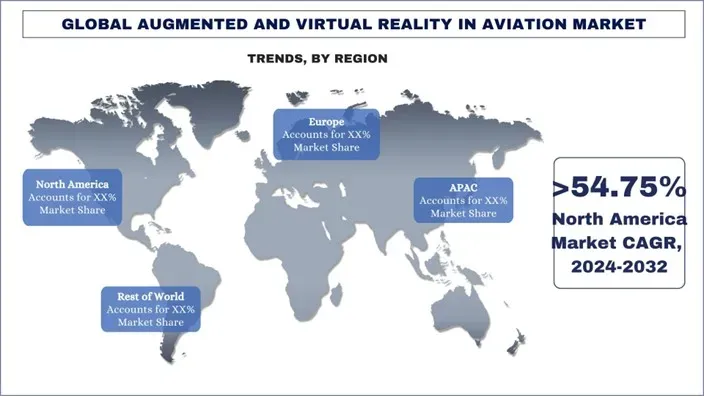
预计培训部门的复合年增长率将高于航空领域增强现实和虚拟现实市场。
根据功能,全球航空领域增强现实和虚拟现实市场已细分为培训和运营。考虑到飞机驾驶舱的变化,越来越需要提供基于模拟的培训。由于新一代飞机配备了专注于视觉表示以访问控件的数字系统,因此对飞行模拟培训的需求不断增长。这种基于AR和VR的培训解决方案可以提供真实的场景,并帮助航空和军事行业节省用于实际培训的成本。运营培训是AR和VR在航空领域的另一个方面,它通过实际飞机的视觉表示来进行预测性维护和维修工作。由于相当数量的飞机仍然是老一代飞机,并且缺乏部署、使用和维护此类系统的熟练人员,因此该技术正处于发展阶段。但是,随着航空业的转变,运营部门将以更快的速度集成并表现出更快的增长率。
预计北美在预测期内将占据主要市场份额
北美航空领域增强现实和虚拟现实市场在全球范围内占据了主要的市场份额。促成增长的一些关键因素是存在需要定期维护、维修和大修活动的最大商用和军用飞机机队。由于近年来主要航空公司下了大量订单,预计北美航空业将进一步增长。例如,2024年,美国航空公司从空客、波音和巴西航空工业公司订购了260架新飞机。通过大规模采购,该航空公司希望扩大其跨大西洋运营的国际业务。
波音公司是拥有大量未完成订单、年初至今交付量等的关键制造商之一。例如,根据波音公司的数据,截至2024年5月31日,737、767、777和787型号的总未完成订单分别为4763、96、539和790架。
考虑到未来几年将交付的大量未完成订单,预计在预测的几年(即2024-2032年)中,对用于维护和飞行员培训的AI和VR技术服务的需求将会增加。
美国在美国航空领域增强现实和虚拟现实市场中占据主导地位
由于多家航空公司、国防承包商和航空培训公司将AR/VR集成到其运营和产品中,以提高安全性、优化流程并吸引乘客,美国航空领域增强现实和虚拟现实(AR/VR)市场正在稳步增长。虚拟现实和增强现实正在飞行员和机组人员培训模拟、飞机维护和设计模型中得到应用,在这些模型中,提供了实时交互以及高水平的风险消除和培训效率的提高。这些技术正在迅速取代商业和军事航空中的传统做法,从而使任务变得不那么复杂,减少了错误,并鼓励通过网络进行的团队合作。对业务流程的创新和数字化转型的一般兴趣的增加有助于美国航空业对新的、可扩展的AR/VR解决方案的需求不断增加。
航空领域增强现实和虚拟现实行业竞争格局
航空领域增强现实和虚拟现实市场竞争激烈,拥有多家全球和国际参与者。主要参与者正在采取不同的增长策略来增强其市场影响力,例如合作伙伴关系、协议、合作、新产品发布、地域扩张以及并购。
航空领域增强现实和虚拟现实市场顶级公司
市场上一些主要的参与者包括微软公司、谷歌公司、Eon Reality、Aero Glass、霍尼韦尔国际公司、Sita、IBM、Bohemia Interactive Solutions、Oculus VR和Elbit Systems Ltd。
航空领域增强现实和虚拟现实市场最新发展
- 2024年1月,法国政府宣布额外购买42架阵风战斗机,总成本为55亿美元。相应的飞机将在2027年至2032年之间交付。
- 2024年,捷克政府与美国政府签署了一项协议,购买24架新的F-35战斗机。该交易的总价值为66亿美元,将在2031年至2035年之间交付。
全球航空领域增强现实和虚拟现实市场报告覆盖范围
详细信息 | |
基准年 | 2023 |
预测期 | 2024-2032 |
增长势头 | 以49.04%的复合年增长率加速增长 |
2023年市场规模 | 5.2755亿美元 |
区域分析 | 北美、欧洲、亚太地区、世界其他地区 |
主要国家 | 美国、加拿大、英国、法国、德国、意大利、西班牙、中国、日本、印度 |
公司简介 | 微软公司、谷歌公司、Eon Reality、Aero Glass、霍尼韦尔国际公司、Sita、IBM、Bohemia Interactive Solutions、Oculus VR、Elbit Systems Ltd. |
报告范围 | 市场趋势、驱动因素和限制因素;收入估算和预测;细分分析;需求和供应侧分析;竞争格局;公司简介 |
涵盖的细分市场 | 按技术、按功能、按产品、按组件、按地区/国家 |
购买航空领域增强现实和虚拟现实市场报告的理由:
- 该研究包括经过认证的关键行业专家验证的市场规模和预测分析。
- 该报告提供了一个对整体行业绩效的快速回顾。
- 该报告涵盖了对主要行业同行进行深入分析,主要侧重于关键业务财务、产品组合、扩张战略和最新发展。
- 详细考察了行业中普遍存在的驱动因素、限制因素、关键趋势和机遇。
- 该研究全面涵盖了不同细分市场的市场。
- 深入分析了行业区域层面。
定制选项:
全球航空领域增强现实和虚拟现实市场可以根据需求或任何其他细分市场进一步定制。除此之外,UnivDatos理解您可能有自己的业务需求;因此,请随时与我们联系,以获取完全满足您要求的报告。
目录
全球航空领域增强现实和虚拟现实市场分析 (2024-2032) 的研究方法
我们分析了历史市场,评估了当前市场,并预测了全球航空领域增强现实和虚拟现实市场的未来市场,以评估其在全球主要区域的应用。我们进行了详尽的二级研究,以收集历史市场数据并评估当前市场规模。为了验证这些见解,我们仔细审查了大量发现和假设。此外,我们还与航空领域增强现实和虚拟现实价值链中的行业专家进行了深入的一级访谈。通过这些访谈验证市场数据后,我们使用了自上而下和自下而上的方法来预测整体市场规模。然后,我们采用市场细分和数据三角测量方法来评估和分析行业细分市场和子细分市场的市场规模。
市场工程
我们采用数据三角测量技术来最终确定整体市场评估,并得出全球航空领域增强现实和虚拟现实市场每个细分市场和子细分市场的精确统计数据。通过分析各种参数和趋势,包括技术、功能、产品、组件以及全球航空领域增强现实和虚拟现实市场内的区域,我们将数据分解为多个细分市场和子细分市场。
全球航空领域增强现实和虚拟现实市场研究的主要目标是
该研究确定了全球航空领域增强现实和虚拟现实市场中的当前和未来趋势,为投资者提供了战略见解。它突出了区域市场的吸引力,使行业参与者能够进入未开发的市场并获得先发优势。研究的其他量化目标包括:
- 市场规模分析: 评估全球航空领域增强现实和虚拟现实市场及其细分市场当前和预测的市场规模,以价值(美元)计。
- 航空领域增强现实和虚拟现实市场细分: 该研究按技术、功能、产品、组件和区域对市场进行细分。
- 监管框架和价值链分析: 审查航空领域增强现实和虚拟现实行业的监管框架、价值链、客户行为和竞争格局。
- 区域分析: 对亚太地区、欧洲、北美和世界其他地区等主要区域进行详细的区域分析。
- 公司简介和增长战略: 航空领域增强现实和虚拟现实市场的公司简介以及市场领导者为维持快速增长的市场而采取的增长战略。
常见问题 常见问题
Q1:全球航空领域增强现实和虚拟现实市场的当前市场规模和增长潜力是什么?
全球航空领域的增强现实和虚拟现实市场在 2023 年的估值为 5.2755 亿美元,预计在预测期内(2024-2032 年)将以 49.04% 的复合年增长率增长。
Q2:全球航空增强现实和虚拟现实市场增长的驱动因素有哪些?
航空领域(包括培训和预测性维护)对增强现实和虚拟现实不断增长的需求是推动增长的关键因素之一。
Q3:哪个细分市场在技术上占据全球航空领域增强现实和虚拟现实市场最大的份额?
按技术划分,增强现实细分市场在全球航空增强现实和虚拟现实市场中占据最大的份额。
Q4:哪个地区将在全球航空增强现实和虚拟现实市场中占据主导地位?
预计在预测期内,北美将主导市场。
Q5:航空领域增强现实和虚拟现实市场的主要趋势是什么?
在飞行员和机组人员培训中,AR/VR技术的日益普及正在提高真实性和安全性,降低培训成本,并加速其在商业和军事航空领域的应用。
Q6:航空领域增强现实与虚拟现实市场面临的最大挑战是什么?
高昂的实施成本以及与现有航空系统存在的技术集成问题继续阻碍着AR/VR解决方案的广泛应用,尤其是在规模较小的航空公司和运营商中。
Q7:全球航空增强现实和虚拟现实市场中的顶尖玩家有哪些?
在航空领域推动增强现实和虚拟现实创新的主要公司包括:
微软公司
谷歌公司
Eon Reality
Aero Glass
霍尼韦尔国际公司
Sita
IBM
Bohemia Interactive Simulations
Reality Labs Inc. (Meta)
Elbit Systems Ltd
Q8:增强现实和虚拟现实如何提高航空业务的运营效率?
AR/VR技术通过为维护提供实时远程协助、通过沉浸式模拟增强机组人员培训以及支持更快速的设计和原型设计,从而简化航空运营。 这些改进减少了停机时间、优化了资源利用率并提高了各种航空功能的准确性。
Q9:投资者在资助航空领域的AR/VR项目之前应该考虑哪些因素?
投资者应评估技术的成熟度、法规合规性、与现有航空系统的集成能力以及AR/VR解决方案的可扩展性。市场准备情况、合作潜力以及与航空领域数字化转型趋势的一致性也是做出明智投资决策的关键考虑因素。
相关 报告
购买此商品的客户也购买了

